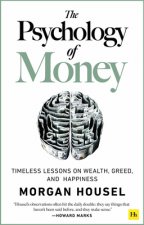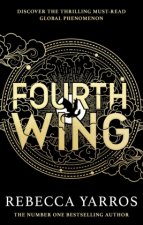
Kod: 20093903
Cellular Automata: Analysis and Applications
Autor Karl-Peter Hadeler, Johannes (University of Cambridge) Muller
This book provides an overview of the main approaches used to analyze the dynamics of cellular automata. Cellular automata are an indispensable tool in mathematical modeling. In contrast to classical modeling approaches like parti ... więcej
- Język:
 Angielski
Angielski - Oprawa: Miękka
- Liczba stron: 467
Wydawca: Springer International Publishing AG, 2018
- Więcej informacji o książce

153.32 €

Dostępna u dostawcy w małych ilościach
Wysyłamy za 13 - 16 dni
Potrzebujesz więcej egzemplarzy?Jeżeli jesteś zainteresowany zakupem większej ilości egzemplarzy, skontaktuj się z nami, aby sprawdzić ich dostępność.
Dodaj do schowka
Zobacz książki o podobnej tematyce
-

Wait for Me
29.19 € -

Test Talk
36.84 € -

Mein 1. Hagenbeck-Buch
7.24 € -14 % -

Missing Dad 2
10.56 € -18 %
Podaruj tę książkę jeszcze dziś
- Zamów książkę i wybierz "Wyślij jako prezent".
- Natychmiast wyślemy Ci bon podarunkowy, który możesz przekazać adresatowi prezentu.
- Książka zostanie wysłana do adresata, a Ty o nic nie musisz się martwić.
Więcej informacji o Cellular Automata: Analysis and Applications
Za ten zakup dostaniesz 385 punkty
 Opis
Opis
This book provides an overview of the main approaches used to analyze the dynamics of cellular automata. Cellular automata are an indispensable tool in mathematical modeling. In contrast to classical modeling approaches like partial differential equations, cellular automata are relatively easy to simulate but difficult to analyze. In this book we present a review of approaches and theories that allow the reader to understand the behavior of cellular automata beyond simulations. The first part consists of an introduction to cellular automata on Cayley graphs, and their characterization via the fundamental Cutis-Hedlund-Lyndon theorems in the context of various topological concepts (Cantor, Besicovitch and Weyl topology). The second part focuses on classification results: What classification follows from topological concepts (Hurley classification), Lyapunov stability (Gilman classification), and the theory of formal languages and grammars (Kurka classification)? These classifications suggest that cellular automata be clustered, similar to the classification of partial differential equations into hyperbolic, parabolic and elliptic equations. This part of the book culminates in the question of whether the properties of cellular automata are decidable. Surjectivity and injectivity are examined, and the seminal Garden of Eden theorems are discussed. In turn, the third part focuses on the analysis of cellular automata that inherit distinct properties, often based on mathematical modeling of biological, physical or chemical systems. Linearity is a concept that allows us to define self-similar limit sets. Models for particle motion show how to bridge the gap between cellular automata and partial differential equations (HPP model and ultradiscrete limit). Pattern formation is related to linear cellular automata, to the Bar-Yam model for the Turing pattern, and Greenberg-Hastings automata for excitable media. In addition, models for sand piles, the dynamics of infectious d
 Szczegóły książki
Szczegóły książki
153.32 €
- Pełny tytuł: Cellular Automata: Analysis and Applications
- Autor: Karl-Peter Hadeler, Johannes (University of Cambridge) Muller
- Język:
 Angielski
Angielski - Oprawa: Miękka
- Liczba stron: 467
- EAN: 9783319850474
- ID: 20093903
- Wydawca: Springer International Publishing AG
- Waga: 730 g
- Wymiary: 235 × 155 × 28 mm
- Data wydania: 01. August 2018
Ulubione w innej kategorii
-

The Book of Bill
23.75 € -14 % -

Gravity Falls Journal 3
16.40 € -23 % -

Berserk Deluxe Volume 1
44.39 € -11 % -

Pumpkin Spice Cafe
11.77 € -17 % -

Berserk Deluxe Volume 2
52.24 € -

White Nights
3.51 € -23 % -

It ends with us
8.75 € -18 % -

48 Laws Of Power
18.01 € -9 % -

A Little Life
17.51 € -

Atomic Habits
15.90 € -14 % -

Berserk Deluxe Volume 3
48.82 € -2 % -

Gilmore Girls: The Official Advent Calendar
28.88 € -25 % -

Surrounded by Idiots
10.46 € -29 % -

Jujutsu Kaisen, Vol. 23
9.76 € -26 % -

The 48 Laws of Power
24.56 € -5 % -

The Official Stardew Valley Cookbook
22.34 € -22 % -

Berserk Deluxe Volume 4
45.19 € -10 % -

A Good Girl's Guide to Murder
8.14 € -25 % -

Iron Flame
16.30 € -17 % -

A Curse For True Love
10.36 € -12 % -

Berserk Deluxe Volume 5
50.43 € -

It Starts with Us
8.95 € -16 % -

Twisted Love
9.76 € -24 % -

Powerless
10.46 € -18 % -

Twisted Hate
10.16 € -20 % -

The Husky and His White Cat Shizun: Erha He Ta de Bai Mao Shizun (Novel) Vol. 6
16.20 € -19 % -

Court of Mist and Fury
9.35 € -18 % -

Twisted Lies
9.76 € -24 % -

English File: Intermediate: Student's Book with Online Practice
25.56 € -7 % -

Reckless
10.26 € -20 % -

Psychology of Money
18.92 € -3 % -

Chainsaw Man, Vol. 16
10.76 € -18 % -

Berserk Deluxe Volume 6
51.13 € -

Everything I Know About Love
10.36 € -29 % -

Twisted Games
9.76 € -17 % -

Court of Thorns and Roses Paperback Box Set (5 books)
50.03 € -20 % -

Vagabond (VIZBIG Edition), Vol. 1
24.56 € -

English File Upper Intermediate Student's Book with Student Resource Centre Pack (4th)
36.33 € -6 % -

Gravity Falls: Lost Legends
17.81 € -15 % -

Court of Thorns and Roses
9.25 € -19 % -

Headway: Elementary: Student's Book with Online Practice
24.96 € -7 % -

A Court of Wings and Ruin
10.76 € -6 % -

The Courage To Be Disliked
10.96 € -14 % -

Headway: Elementary: Workbook Without Key
25.56 € -4 % -

A Court of Silver Flames
10.16 € -20 % -

Meow
20.73 € -

Once Upon A Broken Heart
10.66 € -17 % -

SOLO LEVELING V09
17.51 € -12 % -

Fourth Wing
10.26 € -28 %
Osobní odběr Bratislava a 2642 dalších
Copyright ©2008-24 najlacnejsie-knihy.sk Wszelkie prawa zastrzeżonePrywatnieCookies


 Vrácení do měsíce
Vrácení do měsíce Zdarma od 49.99 €
Zdarma od 49.99 € 02/210 210 99 (8-15.30h)
02/210 210 99 (8-15.30h)